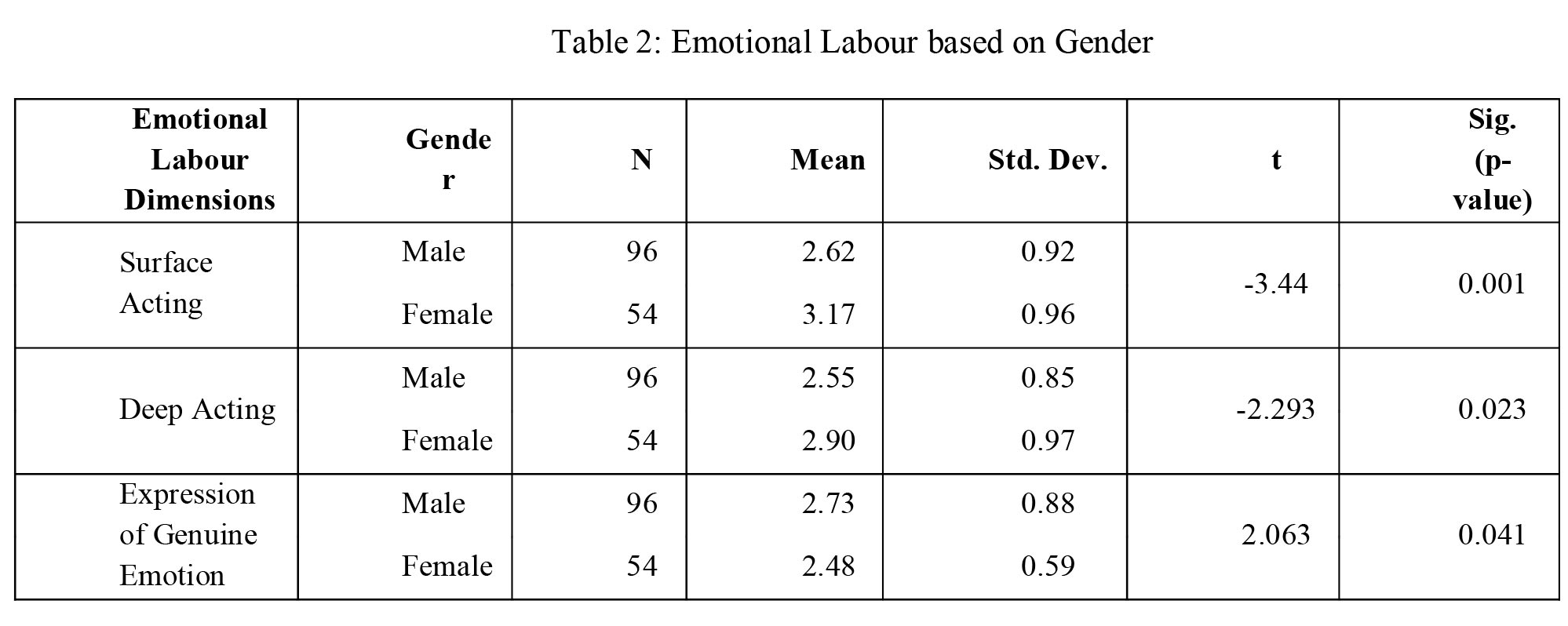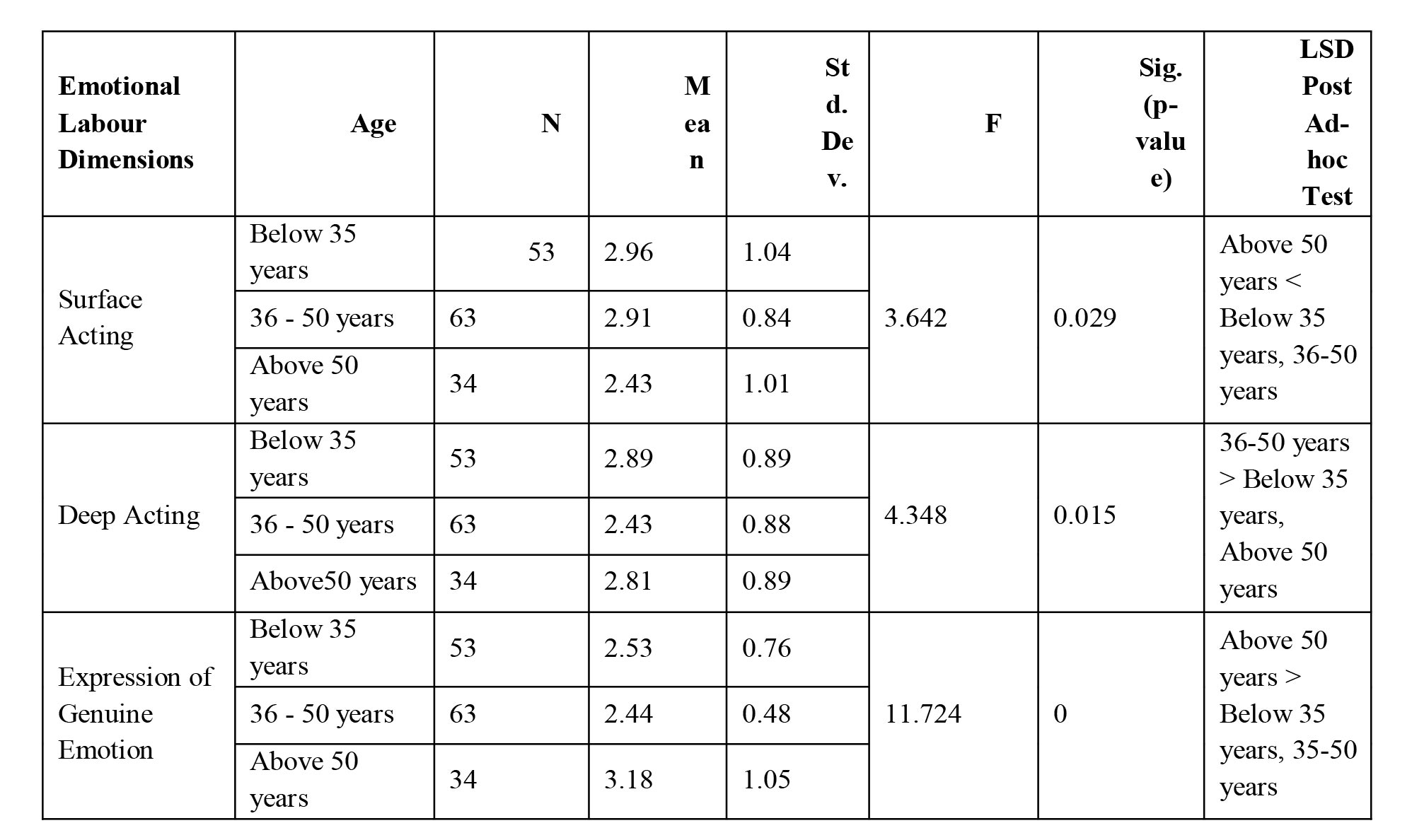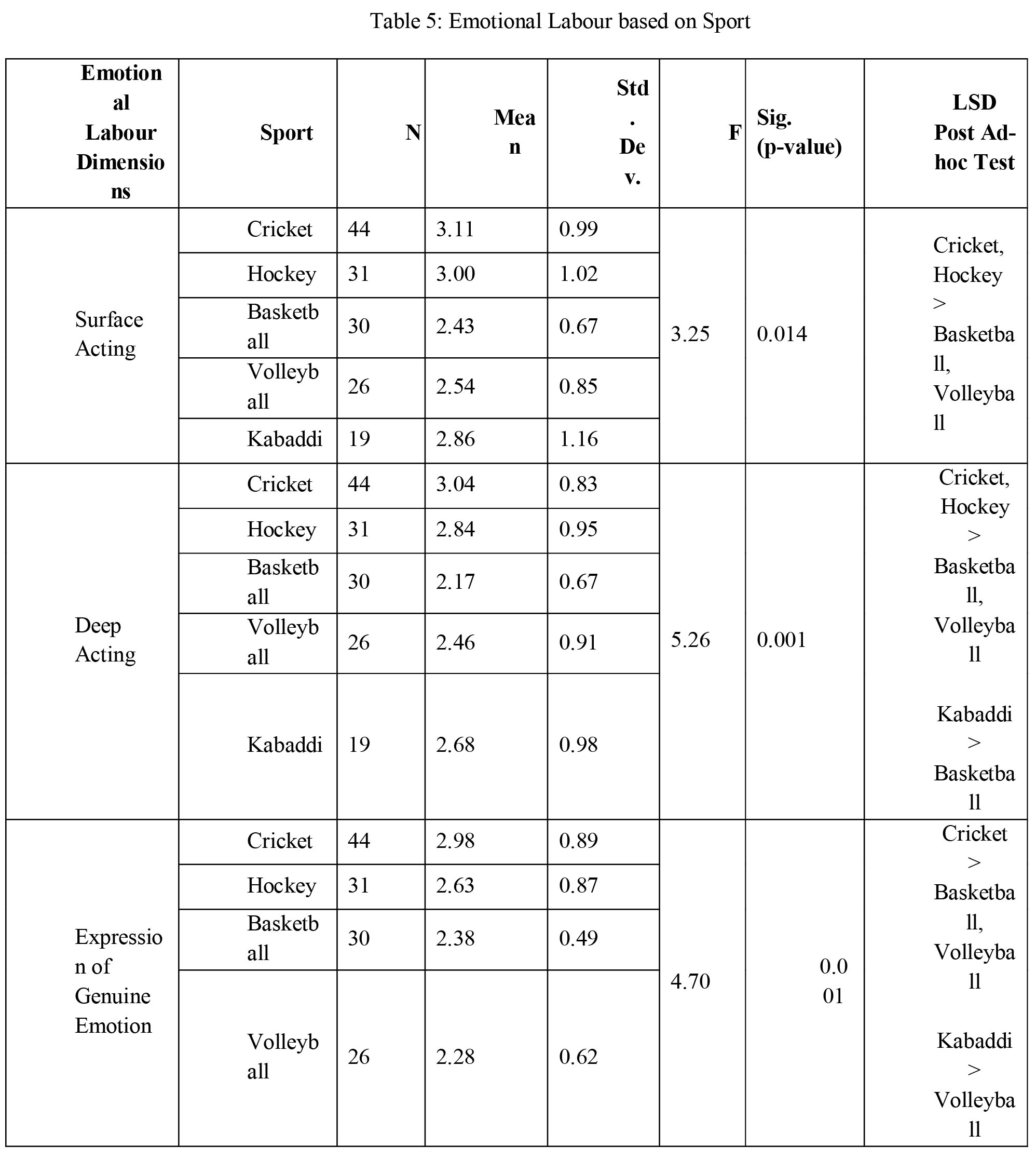Subscribe now to get notified about IU Jharkhand journal updates!
Emotional Labour Assessment of Sports Team Coaches in Universities
Abstract :
We need to add Emotional Labour to the twenty first century skills. Because without emotional labour, employee will not get involvement in to the job.Sports team Coaches will react in their teams according to Practice, motivation, stress and Past experience. In the same way coaches of the teams will also react according to the Emotional Labour. so This study aims to assess the Emotional Labour of sports team coaches in universities who became a coach from player. And from the teams of : Cricket, Hockey, Basketball, Volleyball, Kabaddi.
Keywords :
Emotional Labour, Surface Acting, Deep Acting, Expression of Genuine EmotionIntroduction
Measuring the human emotions is not a easy task. In this way measuring emotions of an employee is also a hard job. People who are in sports are facing high stress due to goal, target, social pressure, and by peers. Recently shooter Konica layak dies by suicide sets off alarm in rifle shooting player circle. Especially sports coaches facing many types of mental health issues. It's very easy to overlook on the outside of the ground. But it's very hard to look inside the things burning in their mind to meet the victory. Sports coaches are spending lots of time and energy for to achieves the victory.so this paper adopted Emotional Labour Scale (Adapted from Lee (2012), Brotheridge and Lee (2003) and Ashforth and Humphrey (1993)) to find out the deep acting and surface acting ,Expression of genuine emotions of Sports team coaches. We had taken 150 samples across Tamil Nadu . And we used Descriptive statistics, Independent-samples T-Test,One-way ANOVA to test the dimensions of emotional labour.
Review of Literature:
The individual has to show particular type emotions in certain set of situations, irrespective of their real emotional state in accordance with collective norms. The individual either conceals or exaggerates actual feeling, to confirm with collective norms (called display rule). Some effort is required in concealing or exaggerating the real emotions, the effort is called emotional labour. Aril R. Hochschild (1983), an American sociologist coined the term in her seminal book "The Managed Heart: Commercialization of Human Feeling". She defined the term as "management of feeling to create a publicly observable facial and bodily display". She emphasized the impression management by service employee is emotional labour. She also specified three features of jobs involving emotional labour; as: a) must have face- to- face or voice- to- voice interaction; b) must have some organizational or professional display rules; and c) must induce a favorable emotional state. Ashforth and Humhery (1993) opine that emotional labour as an act of displaying appropriate emotions considering the objective of impression management to better social perception of himself/ herself as well as to condition of interpersonal climate (Grander & Martinko, 1988). There has been great emphasis on the behaviour projection of emotions in the interpersonal interaction at the work place. Morris and Feldman (1996) defined emotional labour as planned and controlled effort to express organizationally desired emotions during interpersonal transaction. The researchers' emphasis organizational expectations of emotions for employees in their interaction with the clients and the internal stress experienced during display of discrepant emotions from their true feelings. They identified four dimensions of emotional labour which characteristics of job: a) frequency of interaction; b) attentiveness (intensity of emotions, duration of interaction); c) variety of emotions required; and d) emotional dissonance. Grandey (2000) defines emotional labour involving managing emotions so that they are in accordance with organizational or professional display rule. This conceptualization has an inherent assumption that some organization or profession has some set of emotions which are to be displayed during personal interaction with clients. This could be the best conceptualization of emotional labour as it summarise the definitions of Hochschild (1983) and Morris and Fieldsman (1996). Although, ignored the factor of emotional dissonance, which has been historically an integral part of emotional labour. There been persistent ambiguities on point that what is and what is not emotional labour. Researchers found the common thread running through every conceptualization. Emotional labour involves managing emotions so as to confirm to organizational or professional display rule; individual put some effort to conceal or exaggerate their true feelings to satisfy organizational requirement. Emotional labour focuses primarily on behavioral expression and non- expression or suppression of felt emotions to be confirming to display rule. Thus, emotional labor is the deliberate cognitive effort of the employees to display emotions as per organizational or professional display rule, and are paid for their meliorate performance in developing positive identification with clients in interpersonal interaction.
Data Analysis Results
Research questions were made to find out the impact level of Emotional Labor Dimensions of surface acting and deep Acting, Expression of genuine emotion. We have inferred our hypothesis like below.
H1 : Direct coaches are doing more surface acting then player to coach
H2 : Direct coaches doing high deep acting than player to coach
H3 : Expression of genuine emotion is relative high among direct coaches than player to coach
By the help of questionnaire, we had found out that mean of Surface acting is 2.82 and the standard Deviation of surface acting is 0.97. The mean value of Deep acting is 2.68 and the standard Deviation is 0.91. Expression of Genuine Emotion mean value is 2.26 and the standard Deviation is 0.79 which is also shown in the Table 1.

It Is Inferred that in Table 2 mean deviation and Standard Deviation of Surface Acting of 96 Male is comparatively low from 54 Female coaches. And the Mean deviation and Standard Deviation of Deep Acting is comparatively low for the male coaches when compared to female coaches (Mean 2.55<2.90). Expression of Genuine Emotion inferred that very high for male coaches when compared to female coaches (Mean 2.73>2.48).

In the below Table No 3, By the Dimensions of Emotional Labour we had found out that Above 50 years of coaches expressing their surface acting in very low compared to Below 35 years.36-50 years rage coaches are expressing their Deep acting in very high percentage. comparatively Below 35 years, and Above 50 years expressing their Deep acting in low percentage.Expression of Genuine Emotion of coaches is high among Above 50 years while comparing to Below 35 years, 35-50 years. And there is no significant difference between three.

In the table 4. We have find that mean of surface acting of Direct Coach/Manager was high than Player to Coach. The Surface Acting of "t" was in negative compared to Deep Acting and Expression of Genuine Emotion. Mean of Deep Acting level of Player to Coach was slightly high when compared to Direct Coach/Manager. Mean of 62 Direct Coach/Managers' Expression of Genuine Emotion is high when compared to 88 Player to Coach's Expression of Genuine Emotion. Standard Deviation of all three was comparatively same. But the deep Acting's t was high when analyzing about Expression of Genuine Emotion.


Discussion and implications of the findings:
The main objective of this study was to analyze emotional labour coping ways, surface acting, deep acting and Expression of Genuine Emotion , adopted by sports coaches. every of the two emotional labour dimensions investigated during this study has consequences on employee's Expression of Genuine Emotion. the subsequent section presents the discussions on the findings of this study.
Surface acting is used by sports coaches to hide negative emotions or fake felt emotions, expressing emotions that one does not feel. A long term use of surface acting is associated with Deep Acting. In this study, it was found that coaches of Cricket, Hockey always use surface acting than Basketball, Volleyball coaches.The general picture is that all coaches at all type of games use surface acting more often than deep acting during practice and motivation.
Summary and Conclusions
Findings in this study have led us to conclude that emotional labouris not properly managed by the coaches. All age group coaches using Emotional Labour use deep acting most of thetimes rather than surface acting. It is very well known that long termperformance of emotional labour can have negative consequences onoutcome of coaches who perform such jobs. particularly Coaches in theCricket, Hockey are likely to experienceExpression of Genuine Emotion, a condition that can render a outcome ineffective.
Recommendations:
Within the context of the Sports coaches, this studyinvestigated emotional labour coping strategies. Based on theobjectives and findings in this study we recommend that Player from coach should be trained and encouraged to use deep acting most of the times and support Player. The coaches should know that they are not in competition with each other. Coaches should be made to understand the crucial role emotional labour during service encounters.
(PDF) Emotional labor and burnout relationship: Role of social support and coping.. Availablefrom:
https://www.researchgate.net/publication/258031407_Emotional_labor_and_burnout_relationship_Rol
e_of_social_support_and_coping [accessed Dec 17 2021].
Hoschschild AR (1983) The Managed Heart Communication of Human
Feeeling Berkeley. University of California Press.
Provis C, Chappel SJ, Anderson BA (2003) The Selection and Training of
Workers in the Tourism and Hospitality Industries for the Performance of
Emotional Labour. Journal of Hospitality and Tourism Management.
Bailey JB, McCollough MA (2000) Emotional Labour and difficult
Customer: Coping Strategies of service agents and organizational
consequences. Journal of Professional Service Marketing 20: 51-72
Grandey A (1998) Emotional Labour: A Concept and its correlates. A
paper presented at the First Conference on Emotions on organizational
life. San Diego. CA.
Guy ME, Newman MA, Mastracci SH (2008) Emotional Labour: Putting
the service in public service. ME Sharpe, New York.
Maslach C, Schaufeli WB, Leiter MP (2001) Job Burnout Annual Review
of Psychology. Scientific Research: An Academic Publisher 52: 397-422.
Parasuraman A, Zeithaml V, Berry L (1988) SERVQUAL: A Multiple item
scale for Measuring Consumer Perceptions of Service Quality. Journal of
Retailing 64: 12.
Ashforth BE, Humphrey RH (1993) Emotional labour in service roles:
The Influence of Identity. Academy of Management Review 18: 88-115.
Grandey AA (2000) Emotion Regulation in the workplace: A New Way to
Conceptualize Emotional Labour. Journal of Occupational Health
Psychology 5: 95-100
